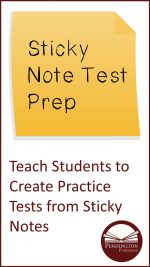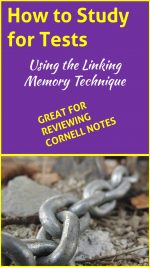How to Take Multiple Choice Tests
Learning how to maximize your scores on multiple choice tests will significantly increase test scores. Multiple choice sections remain the staple of teacher-constructed tests from elementary school through college. They are also the primary format on all standardized tests because the results are easy to grade, quantify, and norm. Norming involves the process of making sure that the test questions predictably achieve a certain number of correct and incorrect answer responses across the state or nation. For example, the SAT® is normed so that half of the student test-takers will get less than and half will get more than 500 out of 800 on each of the three test sections. Here are the tips to “ace” any multiple choice section on your next test.
1. Read all answer choices before selecting an answer. Test-takers frequently say that this strategy helps eliminate rushing though a test and answering impulsively.
2. Try to predict the correct answer before you look at the choices offered. This will provide a mind-set for evaluating the answer choices before you begin to answer. This process also helps to unlock your prior knowledge about the subject gained from test study and life experience.
3. Use the process of elimination. If possible, cross off incorrect answer choices to permit strategic guessing. The fewer the answer choices, the greater is the likelihood of a correct answer selection.
4. Look for grammatical clues to help match. The question stem must match the answer choice. For example, singular must match singular and plural must match plural; also verb tenses must match.
5. The answer should match the language of the test problem or question (positive to positive, negative to negative, grammar, singular or plural, vocabulary).
6. Two close-sounding or looking answers such as “quotient” and “quotation” or 22 and 222 tend to mean that one of the answers is correct.
7. On math tests, if answers cover a wide range, choose the one in the middle.
8. Answer choices that have “Both A and B”, “None of the Above,” or “All of the Above,” or similar tend to be correct.
9. If you must guess, the second to last answer choice is most frequently correct. The last answer is most frequently incorrect.
10. If an Absolute Word such as the following:
- all
- only
- every
- completely
- none
- always
- never
- best
- worst
- absolutely
is found in an answer choice, the answer choice tends to be incorrect because these words do not allow for exceptions.
11. If an Exception Word such as the following:
- some
- most
- sometimes,
- frequently
- often, usually
- maybe
- many
- generally
- partially
is found in an answer choice, the answer choice tends to be correct because these words do allow for exceptions.
12. Finally, make sure to guess, if not sure of your answer choice.
Check out these five FREE test prep resources from the author’s Essential Study Skills curriculum:
Get the Test Prep Skills FREE Resource:
![]()
The author’s Essential Study Skills is the study skill curriculum that teaches what students need to know to succeed and thrive in school. Often, the reason why students fail to achieve their academic potential is not because of laziness or lack of effort, but because they have never learned the basic study skills necessary for success. The 56 lessonsin Essential Study Skills will teach your students to “work smarter, not harder.” Students who master these skills will spend less time, and accomplish more during homework and study time. Their test study will be more productive and they will get better grades. Reading comprehension and vocabulary will improve. Their writing will make more sense and essays will be easier to plan and complete. They will memorize better and forget less. Their schoolwork will seem easier and will be much more enjoyable. Lastly, students will feel better about themselves as learners and will be more motivated to succeed. em>Essential Study Skills is the ideal curriculum for study skill, life skill, Advocacy/Advisory, Opportunity Program classes. The easy-to-follow lesson format of 1. Personal Assessment 2. Study Skill Tips and 3. Reflection is ideal for self-guided learning and practice. Contact the publisher for affordable site licenses.





